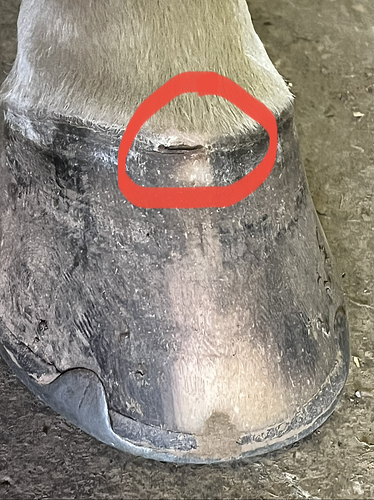Worst possible outcome for the gelding in my avatar, unfortunately. He was 25 and I’d had him since he was 3.
Three-legged lame, vet came out and cleaned up the sole, trying to find a spot that he could open to drain. Nothing obvious at that point.
Stayed three-legged lame for a couple of weeks so we tried an antibiotic limb perfusion. No improvement. Xrays and ultrasounds showed nothing but he was getting worse.
The infection opened up in the back of his pastern and drained from there. Antibiotics, another limb perfusion, and he seemed to get a little more sound.
Took him in to the vet and at that point, he was able to stand on a block for xrays so they were able to get a shot of his navicular bone.
A lot of the back of the navicular bone was just gone. Along with, apparently, the part of the DDFT that should have been attached. The earlier xrays hadn’t shown the damage because he wasn’t able to put his foot down at the correct angle to see it. Apparently, when his DDFT finally went, it was actually less painful and he was able to put weight on that foot.
But of course, at that point, there was nothing we could do so we had to put him down.
I think it was the result of a puncture of some sort. We never saw any sign of a puncture and my vet had cleaned up and inspected his sole pretty well as soon as he came up lame, but I think we must just have missed it.
Thank goodness the vast majority of abscesses do generally heal pretty uneventfully but I’ll never be complacent about one again.







 For you to
For you to 
